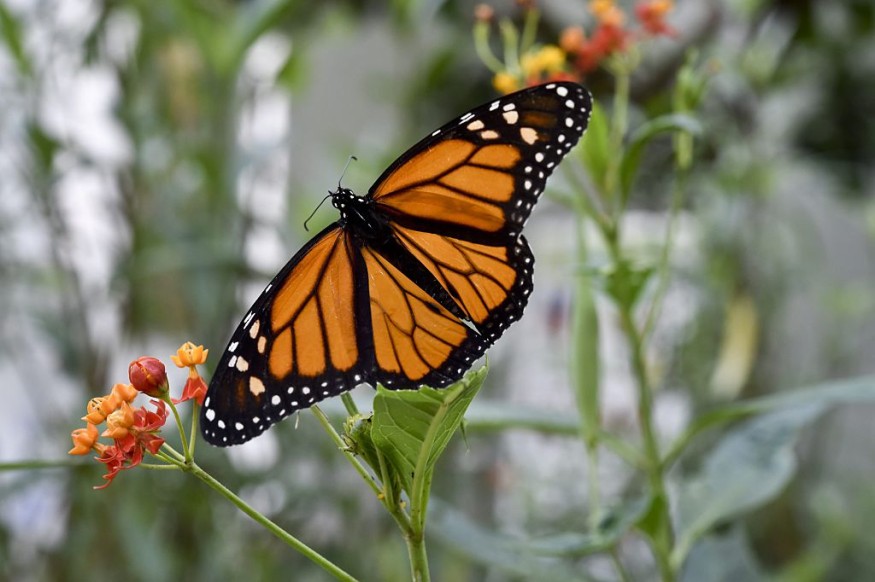Monarch Butterflies: Most Beloved Butterflies in Mexico, US, Canada Now Endangered

Monarch butterflies are perhaps the most iconic insect in some areas of North America, like Mexico and Canada. However, these butterflies are at risk of extinction, as scientists have placed the beautiful orange-and-black insect on the endangered list.
The main reason for their placement there is their fast-declining numbers. Its iconic orange, white, and black pattern remains one of the most famous and iconic animal patterns on Earth, and it is also one of the most recognizable butterfly species in the world.
However, scientists have said that monarch butterflies were recently experiencing a "devastating decline."
Monarch Butterflies Declining at an Alarming Rate
According to CNN, the International Union for Conservation of Nature (IUCN) said Thursday that it added the migratory monarch butterfly to its Red List of Threatened Species as endangered.
The IUCN said the main reason for their decline is the destruction of their habitats and the rising temperatures brought about by climate change.
The IUCN noted that monarch butterflies exclusively lay their eggs on poisonous milkweed plants, the only plants their caterpillars can eat.
Monarch caterpillars eat these plants to become poisonous and dangerous to most predators. However, droughts caused by global warming have limited the growth of milkweed.
Global warming has also disrupted the timing of their annual migrations between Canada and Mexico. New research showed that the chill at the start of spring is triggering this switch. Another factor for their decline was the rise in the use of pesticides and herbicides for agriculture that kill off milkweed plants.
According to the Associated Press, the IUCN listing means these iconic insects are only two steps from extinction. Their numbers have declined rapidly since the 1990s.
Population studies in the eastern United States estimate that the species' population has declined between 85% and 95% during the past 20 years.
The United States has not listed the species under the Endangered Species Act. However, several environmental groups are now clamoring for its inclusion.
The Spectacle of the Annual Monarch Butterfly Migration Between Canada, the U.S., and Mexico
According to the Center for Biological Diversity, monarch butterflies are the only insect species to have a two-way migration.
Like birds, the monarchs travel from Canada and parts of the United States as winter approaches. They spend their winters in Mexico before heading back north in the spring to breed.
However, more and more of these animals are "overwintering" in Mexico mainly because of the dramatic temperature changes over the past few years.
The U.S Fish and Wildlife Service has already declared that the species may warrant protection. However, no decision has been reached yet on its protection status. Groups such as the Center for Biological Diversity are campaigning for its protection.
Experts said there is still hope, and people can save the species and ensure their spectacular and colorful migrations between Canada, the U.S., and Mexico continue.
Scott Hoffman Black, executive director and conservationist for the Xerces Society for Invertebrate Conservation, noted that there is still time to act. Black encouraged people to plant milkweed and nectar flowers and use fewer pesticides.
Scientists are currently recommending that the government promote the growth of milkweed, maintain dense forests and reduce the use of pesticides.
Monarch butterflies may not be as big and powerful as tigers and elephants, but their majesty has captivated millions worldwide. This may be key in raising awareness and saving their species from decline.
This article is owned by Latin Post.
Written by: Rick Martin
WATCH: Migratory Monarch Butterfly Listed as Endangered Species - From Associated Press
Subscribe to Latin Post!
Sign up for our free newsletter for the Latest coverage!
















